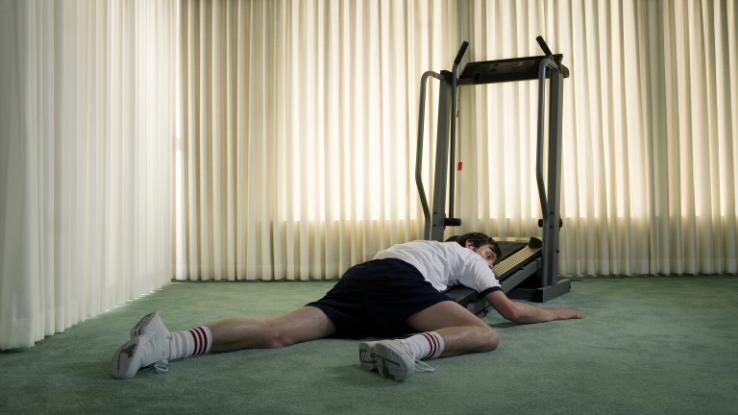
Most people know that physical activity, such as regular exercise, is important for living a healthy lifestyle. Some may not know, however, that physical inactivity is actually considered a risk factor for several illnesses and medical conditions, such as high blood pressure, heart problems, diabetes, and cancer. According to the World Health Organization (WHO), 23% of adults and over 80% of adolescents do not meet globally-recognized physical activity recommendations.
8 Negative Health Effects to Watch Out For Over Time
A sedentary or inactive lifestyle can affect health quality among people of all ages. There are many factors that contribute to physical inactivity. These factors include, but are not limited to:

- Inadequate time for physical activities due to increased work demands.
- Frequent sedentary leisure activities like watching television or playing video games.
- Increased use of cars, buses, or trains for transportation rather than walking or cycling.
- Urban and suburban design features that do not favor physical activity, such as fewer parks and other recreation facilities.
So, what does this mean for your health? Here are some of the most common issues that can develop if someone leads a sedentary lifestyle:
1. Increased Risk of Developing Hypertension
High blood pressure, also known as hypertension, is a primary risk factor for serious medical conditions, such as stroke or kidney disease. Blood pressure measures how forcefully blood is pushed against artery walls by the heart. Physical activity, such as regular exercise, helps make the heart stronger. As the heart becomes stronger, it can pump blood more efficiently. When the heart does not have to work as hard, less force is applied to the arteries, thus lowering one’s blood pressure to a more sustainable range.
2. Increased Risk of Developing Heart Disease
Physical inactivity can contribute to heart disease in several ways. Among those who are less active, the efficiency of coronary blood flow is decreased significantly. In addition, inactivity is associated with high cholesterol levels, which is a contributing factor in the development of heart disease. Exercise helps lower low-density lipoprotein (LDL) cholesterol levels. Being physically active can also increase levels of high-density lipoprotein (HDL) cholesterol, which is good cholesterol that helps protect against heart disease.
3. Osteoporosis is More Likely to Occur
Osteoporosis occurs most often in older adults, particularly women, and is related to a decrease in bone density. This process occurs naturally, in part, but it can be mitigated significantly by increased physical activity — particularly weight-bearing or resistance exercises. By strengthening your muscles, you are strengthening your bones as well, thus decreasing the chance of osteoporosis and subsequent bone fractures or breaks.
4. Increased Risk of Colon and Breast Cancer
Physical inactivity contributes to the risk of colon cancer in several ways. Waste products move through the digestive system more slowly in people who are sedentary. This increases the time the waste spends in the colon, which may expose the colon to possible carcinogens for a longer period of time. Physical activity and a healthy diet work together to help food products move through the digestive system more quickly.
Breast cancer may also occur more often in women who are inactive. According to the National Cancer Institute, physically active women have a 12-21% lower risk of developing breast cancer when compared to their inactive counterparts.
5. Doubles the Risk of Becoming Obese
When an individual has a body mass index (BMI) over 30 kg/m2, they are considered obese. An estimated 2.8 million people die from obesity-related illness per year worldwide. According to the National Heart, Lung, and Blood Institute (NHLBI), those who are physically inactive double their risk of becoming obese. Furthermore, obesity is a major health concern for people of all ages, including children. Illnesses related to obesity include heart disease, hypertension, diabetes, and sleep apnea.
6. Increased Chance of Gallstones
Gallstones are hard deposits of bile that form in the gallbladder. Gallstones can cause symptoms such as abdominal pain, fever, and nausea. Physical activity can decrease triglyceride and cholesterol levels, as well as reduce risk of developing insulin resistance — all of which are known risk factors for developing gallstones.
7. Increases the Likelihood of Developing Adult Onset Diabetes
Type 2 diabetes mellitus occurs when insufficient levels of insulin are produced by the pancreas, or resistance to insulin develops. Two risk factors for developing Type 2 diabetes include being overweight and being physically inactive. Complications of diabetes include kidney disease and heart disease, eye problems and nerve damage. Physical activity is often prescribed as a part of the treatment protocol for those with Type 2 diabetes, as it can have such a profoundly positive impact on the symptoms of the condition.
8. Higher Chance of Experiencing Depression and/or Anxiety
Being physically inactive can also impact one’s mental health. Current research broadly asserts that those who are sedentary — and particularly those who have a chronic illness — are more likely to develop anxiety and depression. Exercise is known to release pleasure-associated chemicals, known as endorphins, which may help reduce the symptoms of anxiety and/or depression over time.
Ways to Increase Your Daily Activity Levels
The good news? If you’re currently living a sedentary lifestyle, you can start making changes. For example, take the stairs instead of the elevator. If you can, try to incorporate a regular exercise routine into your daily regimen. To help you get started, the Centers for Disease Control and Prevention (CDC) recommends 150 minutes of cardiovascular exercise per week and two days per week of strength-building exercises.

Of course, many of us struggle with the idea of going to the gym each day for a dedicated exercise session. However, you can improve your activity level throughout the day without ever setting foot in a gym. Here are some ways to get started:
- If you work or study at a desk all day, set a timer to get up and walk around the room once per hour.
- Opt for the stairs instead of the elevator whenever possible.
- Go on walks during your lunch break.
- Stretch or do yoga while watching TV.
- Take your phone calls while standing or walking.
- Park your car further away from the store or restaurant you’re going to in order to get in some extra steps.
While a big lifestyle shift may seem daunting, remember that you can always start with one day of exercise per week and increase that number over time. In time, a routine will start to feel less daunting, and, instead, just feel like something you do.
Resource Links:
- “Health Risks of an Inactive Lifestyle” via MedlinePlus
- “Physical Inactivity: A Global Public Health Problem” via World Health Organization (WHO)
- “High Blood Pressure” via MedlinePlus
- “Coronary Artery Disease” via MedlinePlus
- “How much physical activity do adults need?” via Centers for Disease Control and Prevention (CDC)
- “Physical Activity and the Risk of Gallbladder Disease: A Systematic Review and Meta-Analysis of Cohort Studies” via National Library of Medicine
- “High Sedentary Behaviour and Low Physical Activity are Associated with Anxiety and Depression in Myanmar and Vietnam” via International Journal of Environmental Research and Public Health
- “Overweight and Obesity” via National Hearth, Lung, and Blood Institute
- “6 Facts on Obesity” via World Health Organization (WHO)
- “Physical Activity and Cancer” via National Cancer Institute
- “Physical activity, hormone replacement therapy and breast cancer risk: A meta-analysis of prospective studies” via National Library of Medicine





